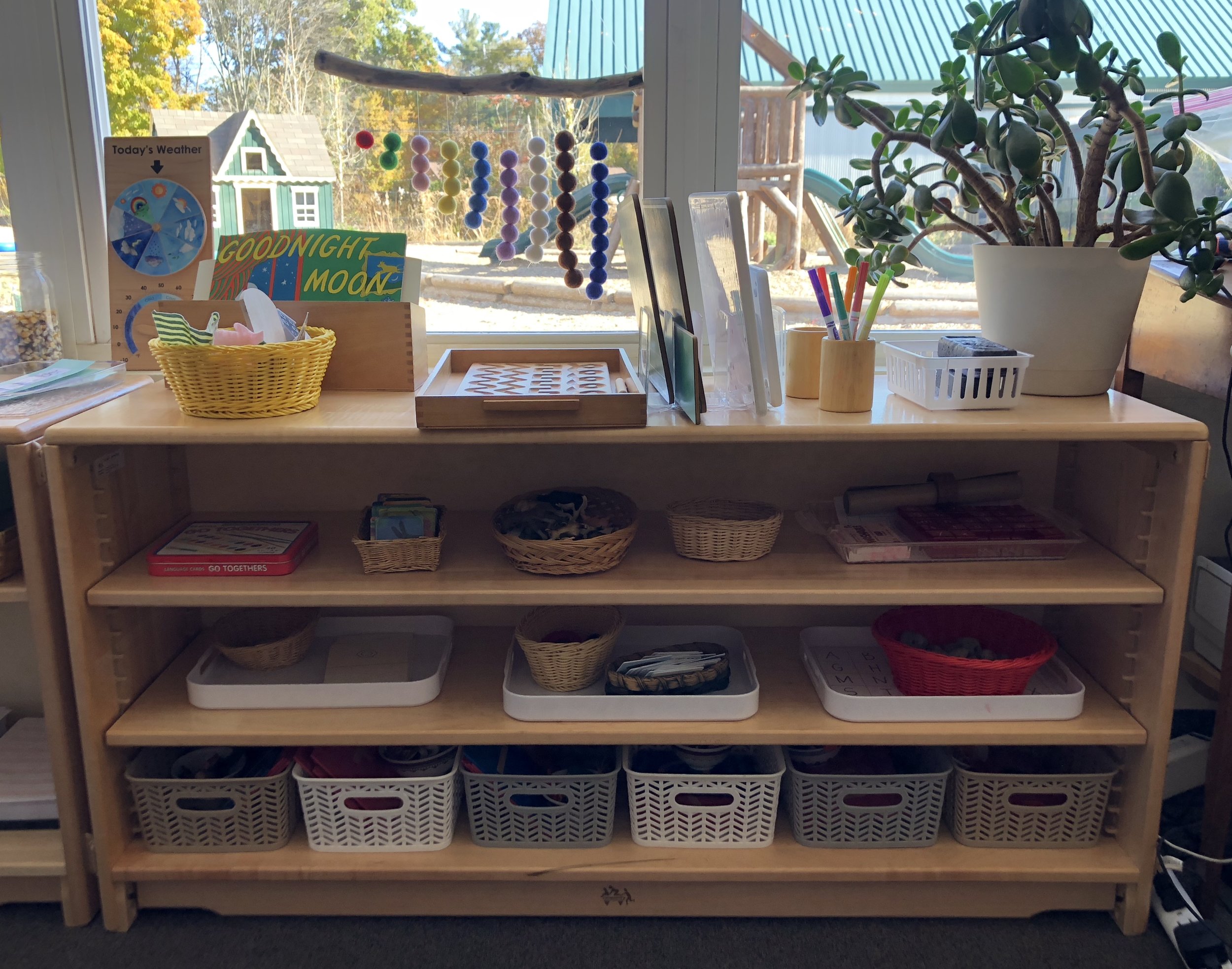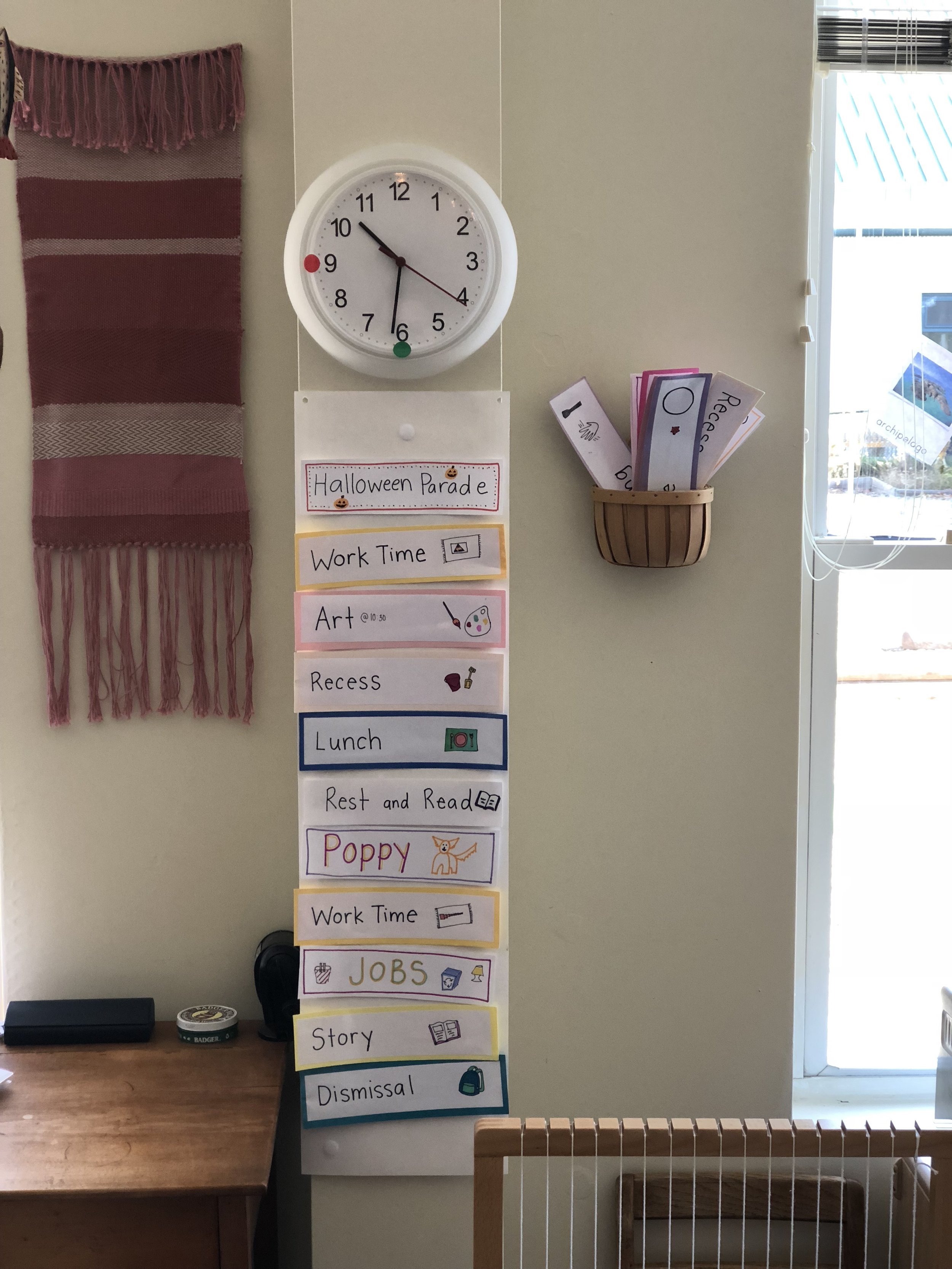How To Bring Your Child's Independence Home
In your child’s Montessori school, you probably hear how teachers’ “foster indpendendence” and your child is changing shoes, hanging up coats, unpacking their back pack and doing all these amazing things for themselves. They are setting their place at the lunch table, laying out their food, placing their napkins on their laps and eating their meals without being asked to!
The question is: Why aren’t they doing that at home?!
Parents, you really have to give yourself a break. Your job is hard. You can’t do everything. If your child is alive and some what happy at the end of each day, you’re doin’ it. BUT, if you feel like you’re looking for more concrete ways to “foster that independence” at home, I have a few things you can try. Now, when I say try, I mean: put into place, explain explicitly to your child what is happening, show them how to do it and then require that they do this thing day in and day out. It must become a routine. It requires diligence and follow through and consistency. It’s hard to establish things like this with young children, but it certainly can be done.
Here are 6 things your child is doing at school that can be translated to home:
A child folding her clothes.
Getting Dressed
If a child has a spill, a (mild) bathroom accident or gets dirty on the playground, it is their responsibility to change their clothes. They have an extra clothing bag on their hook, it is accessible to them and they know they have the power to utilize what is inside. A teacher might give them a plastic bag to put soiled clothes into, but other than that, a child takes care of business themselves. They can get themselves dressed at home as well. At school, just as if we were giving a math lesson, we explain and show things to a child. We never just throw them in the bathroom with a pile of clothes and let them to it! The first time it happens we carefully show them exactly what to do so they can apply that the next time. They can do this at home too!
Option A: I’m all about letting a child choose their own clothes, but, if you have a child who has trouble getting moving, making choices and managing their time (which is most!) - this isn’t the time to use fashion as self-expression. Just like your mother did for you when you were a child: lay out your child’s clothes the night before. There is no choice, just put this on, and go with it.
Option B: If you have a child who CAN make choices and feels strongly about the option to choose their clothing - think capsule wardrobe. Have a low closet bar with 5 pairs of pants, 5 shirts and 5 dresses (one for each day of the “work” week). Undies in an open basket on the floor of the closet and socks next to them. Dressers or drawers can be used for pajamas or other miscellaneous clothing. Perhaps setting a 15 minute timer when it is time to get dressed can help a child make quicker choices, let them know if they cannot get it done during that amount of time, the choice will be made for them (revert to Option A procedure).
Children’s “landing stations” in the background.
Leaving the House/Entering the House
At school, every morning, your child comes into the classroom, hangs up their coat, changes shoes and unloads their backpack. Every day. No exceptions. They don’t do anything else first, we intentionally put the hooks right next to the entrance so they organically flow into this space. It is not a choice, but it also doesn’t have to be. It is just what we do! We need to keep the floors clean, so we change shoes, we would be too hot if we kept our coats on, so we hang them up, and we never leave anything on the floor because someone will definitely step on it. You can recreate this at home.
Have a landing station near the door you most frequently leave and arrive through. Keep it clean, keep it simple. Two low hooks for your child’s coat and one for their back pack. A small tray or basket on the floor for their shoes. Speaking of shoes, perhaps two seasonal choices: sneakers or boots for the winter (not their entire footwear collection). This is when your child takes their lunchbox out and puts in the kitchen or if that is more than you can organize, that can be your job each day when you arrive home. We create landing stations for ourselves - our children need them too. I don’t mean that you should make mini Montessori classrooms all over your house, and I am a huge advocate of keeping your house YOUR house (not toys or child geared things in EVERY room). But, this is a vital part of keeping you and your child’s day organized and having two low hung hooks is not a huge ask.
Independence can’t just happen in the classroom.
Arriving at School
This section is simple. Since everything is neatly packed in the backpack from the landing station, when your child gets out of the car, they bring their back pack with them (which is placed perhaps on the floor near their feet). They carry it in on their back, you do not carry it for them and then pack it onto their back just before they enter the threshold of the classroom. The door way before does not mean “Mom and Dad do everything for you” and when they step through it “You do everything for yourself.” There must be consistency. Don’t let your child fool you into thinking they become a rag doll that needs help doing everything once they leave school! They’re smart like that.
A child gets himself set up for lunch.
Meal Time
Another simple one. Your young child does not need to help prepare dinner (unless that is something you want to facilitate) or even set the entire table. But, they could have one small responsibly: set forks out for everyone perhaps. As this becomes routine, add to their job. This simple act is about making family dinner a community time. Perhaps Mom shops, Dad cooks, child puts the forks out. We all play a role in our family and we are all important.
Children fold the classroom laundry.
Cleaning Up
Let’s all Marie Kondo our playrooms, living rooms, bedrooms. Your child will never clean up if their toy storage is three bottomless bins filled with tiny plastic pieces. We can’t clean that up either, organizing all those little pieces and putting them in their proper places? No way. Pair down. Maybe your child has ten very interesting toys. Maybe when they grow tired of these you pack them into the hallway closet and you take out ten different ones while they are at school or asleep or getting a bath. Perhaps there are 10 clear boxes without lids that each toy goes into. This is something that you have to be thoughtful about. More toys does not mean your child will play with them more or be more independent because there is so much to do! It is actually quite the opposite for the majority of children. Pair down. Offer books. Offer imaginative play props. The things your child can do with paper towel rolls is far beyond what your child can do with a lot of toys on the market. There are no right or wrong toys, but you can never go wrong with manipulatives and imaginative props. Less IS more.
Our classes visual schedule.
Bed Time
A visual schedule can work wonders for a lot of children. Having a visual cue of exactly what will happen can take the negotiation out of the day very easily for many. Take a few minutes to draw a picture and label with a word each step of the bedtime routine you enjoy the most for your life. Perhaps: bath, teeth, story, song could be one example. I like having these on separate cards so that for any reason, if one night there is no bath, you simply take it off the schedule and it is accepted. This is something we do at school each day and it cuts down on any confusion, sets the expectation and limits negotiation attempts.
I hope some of these ideas are helpful - please feel free to add to the ideas in the comments or let me know if you'll be trying something new!





